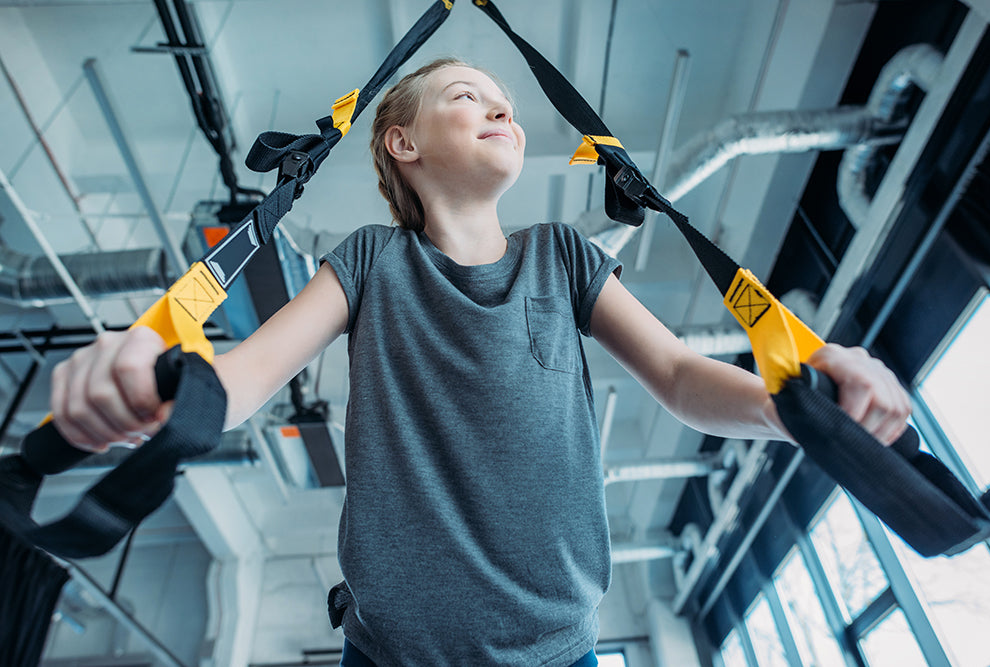
It’s tempting to look at a goal, interest, or idea and focus all your time and attention on it. Especially when it comes to fitness, with so many options and styles, choosing your favorite and not looking back often seems like the most viable option. Yet, switching it up to incorporate different kinds of exercise can actually work to improve your overall athletic skills. This strategy is called cross-training.
Cross-training is an important consideration for individuals of all skill levels. It doesn’t matter whether you’re a triathlete or a casual gym goer, your body benefits from variety.
Cross-training may seem overwhelming, but when broken down it’s actually very achievable. Essentially, cross-training is pairing different exercises together. Putting this into practice can be as simple as switching from high-intensity exercises one day to low-intensity exercises another. Studies have shown that exercises compound on one another—doing one type of exercise will make you better and stronger at doing another.
Yoga may not come to mind when thinking of activities to complement your current workout routine, but yoga is actually an excellent way to work on things many individuals place to the side during a workout—how many times have you skipped stretching at the end of your routine?
People who combine more intense workouts with yoga see an increase in performance in both exercises. There are so many benefits to adding yoga into your routine including increased flexibility and mobility, strengthening, and injury prevention.
An Overview of Cross-Training
Who Benefits From Yoga?
All athletes, whether professional or novice, can benefit from yoga as a form of cross-training. It is particularly beneficial to athletes who do the same type of exercise all year round as a way to decrease impact, reduce risk of injury, and add variety to the workout routine.
According to yoga instructor and founder of Pineappleyogi Retreats, Sharon Ng, “Often we are caught up on getting stronger or hitting that new PR and in doing so we forget the importance of yoga and stretching in our training cycles or programming. Yoga is the missing piece to the puzzle.”
Everyone from runners to powerlifters can benefit from yoga.
10 Yoga Poses That Will Help Runners Stay Injury-Free
How Often Should You Add Yoga to Your Routine?
There isn’t a right or wrong answer to how often you should cross-train with yoga, so it is important to think about your goals and what is realistic for your training schedule. While daily yoga practice has many benefits for mental calmness, as well flexibility and balance, doing yoga even just once a week is an excellent starting point.
Practicing yoga doesn’t need to be time consuming either. Setting aside 10-15 minutes a day for breathing exercises and a few poses can help decrease stress and anxiety and help improve balance.
One study found participants to have improved muscle strength and endurance after practicing yoga once a week over 12 weeks. Whether you begin with ten minutes a day or three times a week, you’ll likely start to see the benefits in your other workouts from practicing yoga consistently.
Yoga Can Help Athletes Gain Core Strength, Balance, and Concentration
Benefits of Yoga as Cross-Training
Whether you are looking for a lower impact muscle building workout, needing a calm mind for mental focus, or looking to gain flexibility and balance to complement your established workout routine, yoga has a wide variety of benefits. Here are five reasons you should start rolling out your mat:
Increases Flexibility, Mobility, and Balance
Flexibility, referring to the length of your muscles, mobility, the way your joints move, and balance are essential for cross-training and yoga and can help improve your range of motion. This helps maintain good form when doing things like squats, lunges, and deadlifts, which can maximize your results.
Ng says, “envision your body like a brand new rubber band—at first it may feel tight, stiff or restricted. But over time through yoga and stretching that brand new rubber band, or in this case our bodies, become a bit more limber and adaptable with greater range of motion to bounce back. Consistency and practice are key!”
One study looked at the impact of yoga on flexibility and balance in college athletes. After a 10-week period, significant gains were seen in flexibility and balance in the group that received the yoga intervention. The results point to the benefits of yoga on enhancing overall athletic performance in activities that require increased flexibility and balance.
Builds Strength
When you think about getting stronger, your mind may go straight to the weight room. Believe it or not, just using your own body weight and holding different yoga poses for longer durations builds a lot of strength and stability in your muscles and joints.
While you may be used to faster pace workouts or lifting heavier weights, it can be a challenge to slow down not only mentally, but physically. This added challenge helps you to work your muscles in a new and different way than you may in your usual workout class or weights session.
Helps Focus Your Breathing
Breathing is a cornerstone of yoga and it can be so helpful to apply to other forms of exercise to help physically and mentally prepare yourself for the task ahead. Not only does breathing calm the body, but learning to control your breath can come in handy when engaging in strength training and other endurance activities.
Promotes Active Recovery and Prevents Injury
Every athlete needs rest days for sore muscles, tendons, and ligaments to recover and repair themselves. Pushing yourself too hard without rest days can put you at risk for developing injuries. Additionally, too much high intensity exercise keeps cortisol, the hormone responsible for activating the body’s fight or flight response, chronically high, even when not exercising.
While high cortisol during training is normal, keeping that hormone level high can lead to undesirable symptoms of overtraining such as chronic fatigue, changes in mood, feelings of anxiety, repressed immune system, and lack of motivation.
According to Ng, “incorporating yoga into your cross-training routine can help prevent injuries and also aid your body in quicker recovery.” Yoga helps calm your stress hormones by engaging your body’s rest and repair system, promoting more efficient recovery.
Helps Connect Body and Mind
Yoga helps you tune into your body to become your own expert on what feels good, when you should push yourself, or when you need to pull back. These skills are transferable to the weight room, track, or wherever else you find yourself working out.
Additionally, yoga increases body awareness. Having better body awareness strengthens your mind-body connection and can make you better able to tell your body to do what you want it to do. When you’re lifting weights, practicing pilates, or running, this awareness translates into making quick form corrections from your coach, trainer, or even yourself.
12 Facts You Should Know About Yoga
Are There Any Risks From Incorporating Yoga?
While there are risks of injury with any activity, injury risk is lower with yoga due to its low-impact nature. Individuals with hyper-mobility, (joints that allow for too much mobility), are at higher risk of injury when doing certain yoga poses.
Common yoga injuries include lower back, neck, knee, wrist, and shoulder strains, however, these injuries are highly preventable when going slowly and working with a good yoga instructor who can coach you on proper form.
Be sure not to overdo it in your yoga practice; avoid or modify any poses that don’t feel good or natural for your body. The most important thing is to listen to your body—if something doesn’t feel right, it probably isn’t.
A Word From Verywell
While yoga is a common practice to cross-train with other workout routines, it’s crucial to not push your body too far in ways that it isn’t accustomed to. Always consult a doctor or physical therapist if you have questions about your readiness to start a yoga program or are worried about a potential injury.
The Beginner’s Guide to Getting Started With Yoga




















